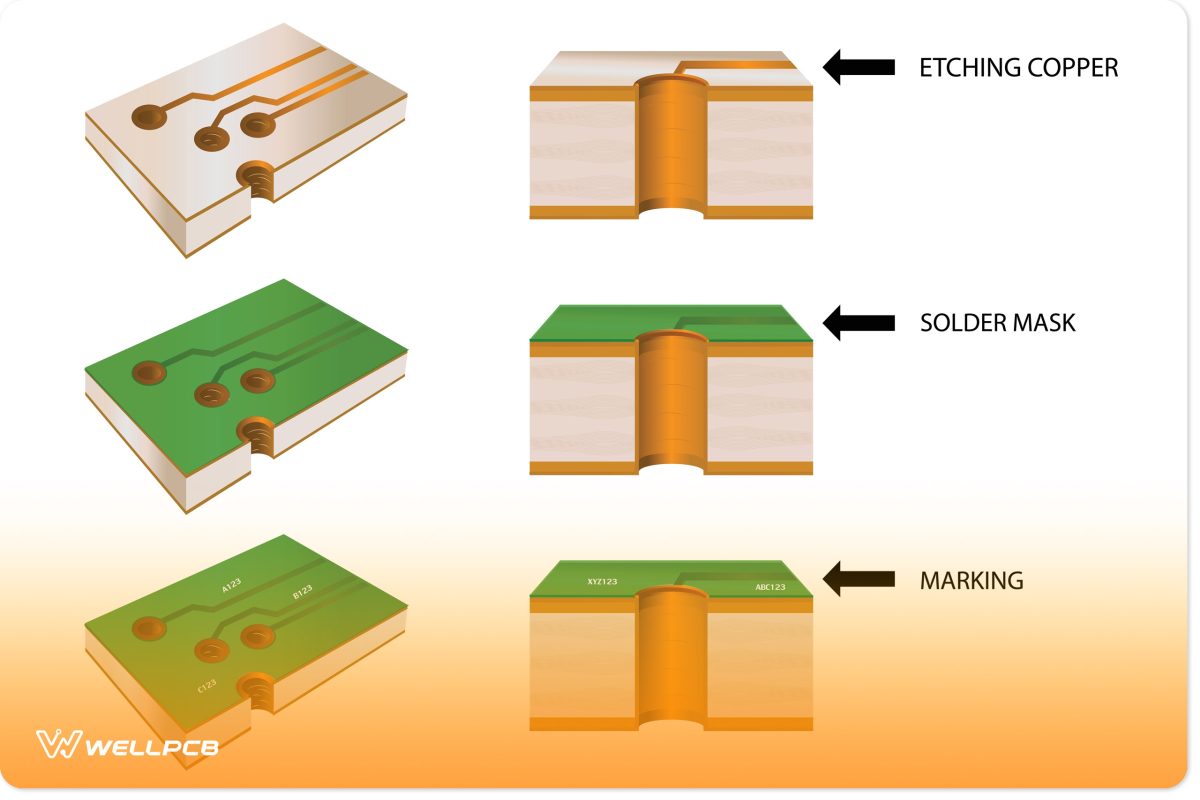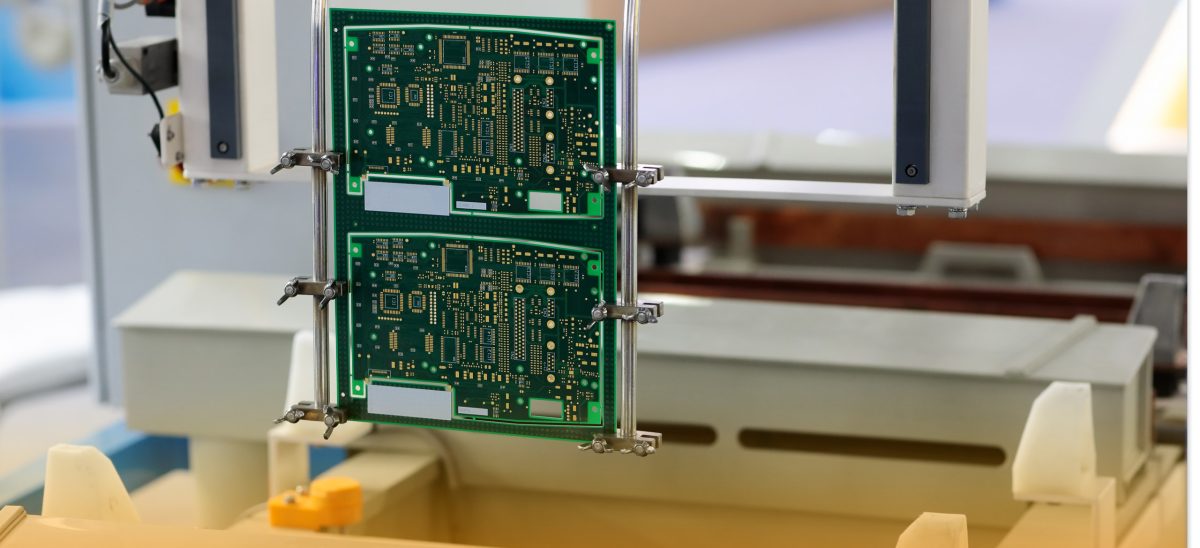Contents
What is PCB Masking?
PCB masking describes the process of applying a protective layer to a printed circuit board’s electronic components.
These components include (but are not limited to) connectors, test sites, large through-holes, unsealed relays, and certain types of integrated circuits (BGAs and QFNs).
PCB masking is similar to solder masking in that manufacturers perform it in preparation for another step or process in the PCB’s fabrication cycle.
What is the Purpose of Masking Your PCBs?
Masking prepares the PCB for the application of conformal coating – which is technically a form of masking, too.
Since we don’t want the conformal coating to disrupt the circuitry and functional components of the PCB, we must mask them.
While selective conformal coating machinery and equipment do exist, they can be very expensive.
Furthermore, these machines have their limitations.
As such, manufacturers with selective conformal coating equipment may still have to manually mask some areas of their PCBs.
This is especially true for manufacturers handling PCBs with complex and varying designs.
Additionally, selective conformal coating equipment may not be cost-efficient for manufacturers who frequently deal with small-volume orders.
Thus, PCB masking will always exist in some capacity.

Stencil Frame Machine Applying Selective Liquid Coating
But why does conformal coating require you to mask your components? Conformal coating adds a layer of protection to PCBs.
It usually consists of a thin polymeric film that can protect PCBs from humidity and other corrosive elements.
However, the conformal coating can be disruptive to a PCB’s electrical continuity.
As such, we need to protect the PCB’s electronic components.
The best way to approach this is by masking them.

PCB Layers Diagram
Types of PCB Masking
Manufacturers have access to a variety of modern PCB masking techniques.
They typically differ in application, price, and material.
The following section covers the most common.
Masking Shields
The most common types of reusable masking shields are masking boots, masking plugs and vinyl.
Custom masking boots are the most widespread because they’re extremely cost-effective.
They’re also easy to apply and remove. However, they do have some limitations.
For instance, each component of a unique board requires a custom boot design.
Custom Boots may also require constant cleaning.
As such, they may not be suitable for large-scale productions with varying materials and designs.
While they provide highly effective protection against conformal coating applied by spraying, they’re suboptimal for masking against dip-coating.
Vinyl caps are similar to Custom Boots in how they are applied.
However, they’re slightly more reusable as the vinyl conforms to the components you apply it to.
Manufacturers use custom masking plugs to fill large vias and through holes.
Masking Tapes
In direct contrast to masking caps and shields, these types of PCB masks are disposable.
Depending on the manufacturer, this can be seen as an advantage or disadvantage.
Regardless, some fabricators prefer to use tapes because they require very little maintenance but may not be the most cost-effective solution.
Moreover, while they may be relatively easy to apply, they can be difficult to remove.
Thus, removal typically requires special care and skill.
There are three main types of PCB masking tapes: low-ESD polyimide tapes, standard polyimide tapes and crepe masking tapes.
Low-ESD Tapes
Generally, the low electrostatic discharge (ESD) tape is the most expensive option, but it’s considered the best.
This is due to its electrostatic discharge-resistant properties that make its removal safer.
Thus, it’s less likely to cause damage to the PCB’s component. Moreover, low ESD tapes are very sticky and leave little to no residue upon removal.

Polymide masking tapes
Polyimide Masking Tapes
If you don’t have access to low-ESD tapes, standard polyimide masking tapes are your next best option. They are cheaper than their low-ESD counterparts.
You can withstand temperatures up to 260 °C (500F), making them highly resilient. They also leave no residue behind after you’ve removed them.
However, while they often may be cheaper, they simply don’t provide you with the same protection against static electricity that low-ESD tapes do.
Regardless, both types are available as either rolls or die-cut tapes, depending on which supplier you choose.
Die-cut tape is trimmed to the size of your components. This makes it easier to apply. Additionally, die-cut tape provides more precise masking.
Crepe Masking Tapes
Crepe masking tapes may not be as resilient as the other options here. However, they are cheaper and easier to work with.
They also use a rubber-based adhesive as opposed to a silicon variety.
As such, crepe masking tapes don’t leave silicon residue upon removal.

Crepe tape
Fluid and Gel-Based Masking Solutions
Masking fluids and gels can either be permanent or temporary. Both types are easy to apply. Only temporary solutions are removable.
Permanent gel or fluid-based masks protect components for life.
Additionally, they are flexible and don’t come in pre-designated shapes. Thus, manufacturers can apply them to almost any component.
Gel-based masking solutions can be installed manually or via machines, making them ideal for high-volume production.
But they do come with some downsides. They can be expensive, and temporary types are typically quite difficult to remove.
They’re similar to masking tapes in that they require special care and expertise.

Application of thermal grease on an IC package
Conclusion
Despite the various masking approaches and techniques, there is no one-for-all solution.
Thus, it would be best if you then weighed your potential masking approach’s attributes against the requirements of your PCB design.
In the above guide, we explored masking PCBs. We covered how they’re performed and all the currently available forms.
If you want to learn more about PCB fabrication, please don’t hesitate to contact us. As always, thank you for reading.





